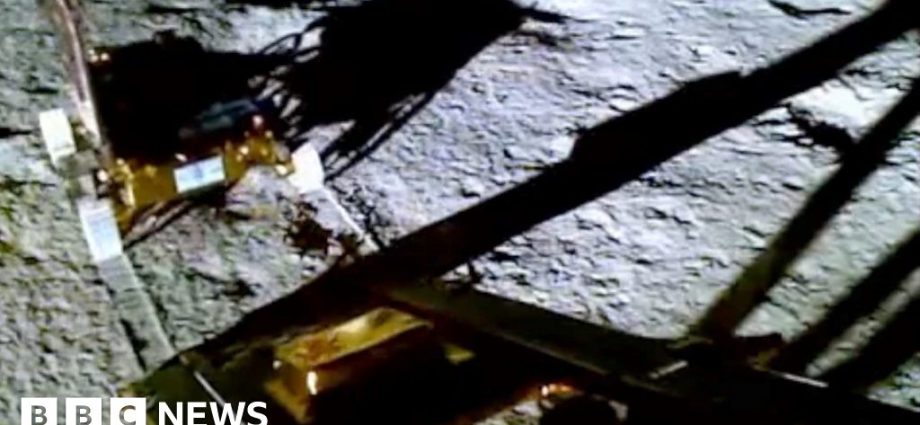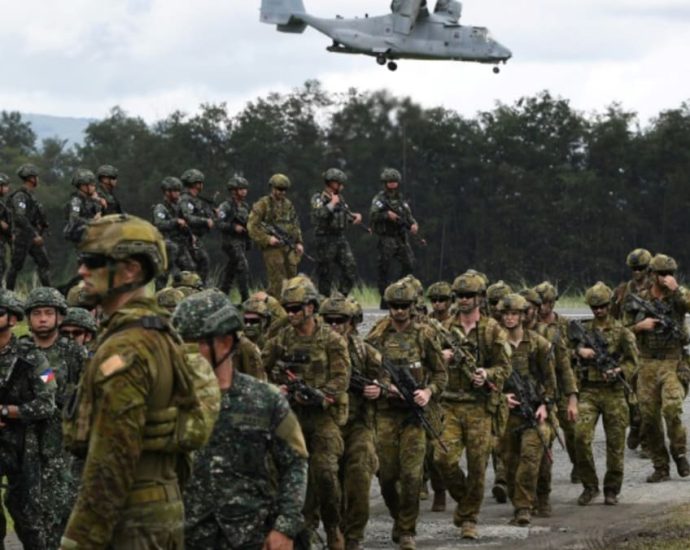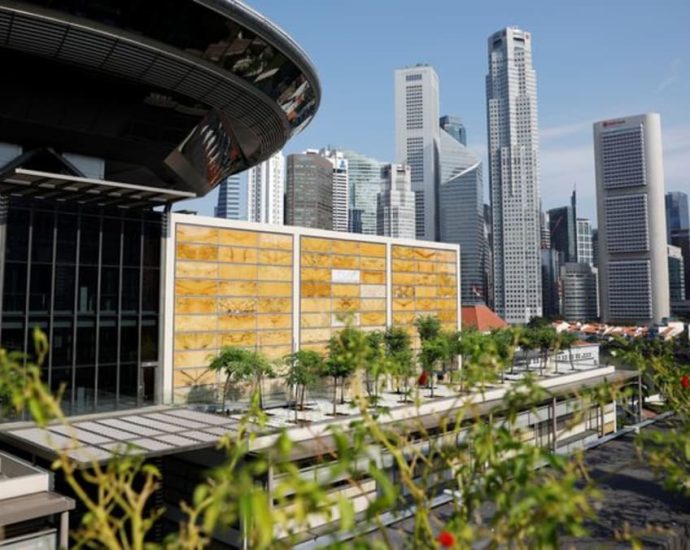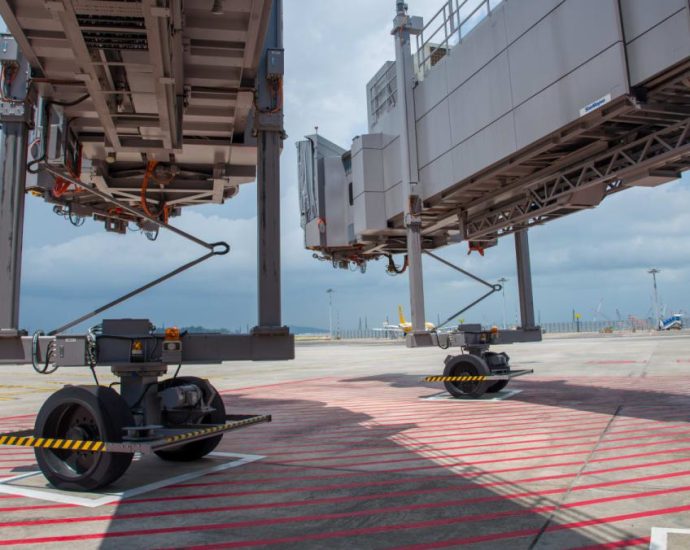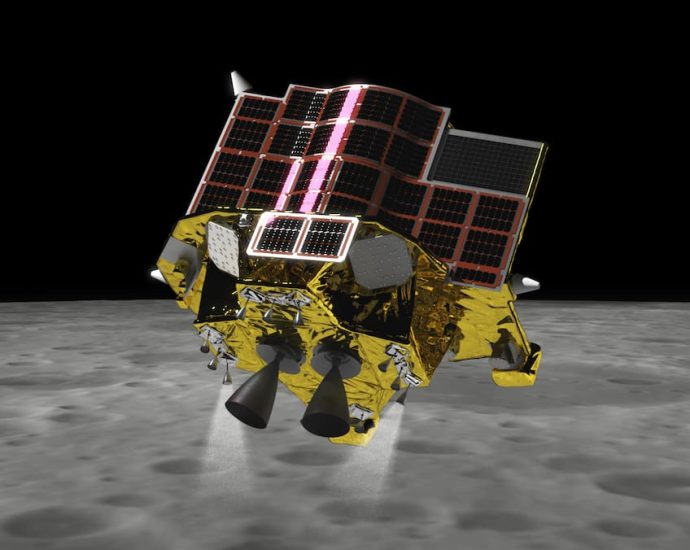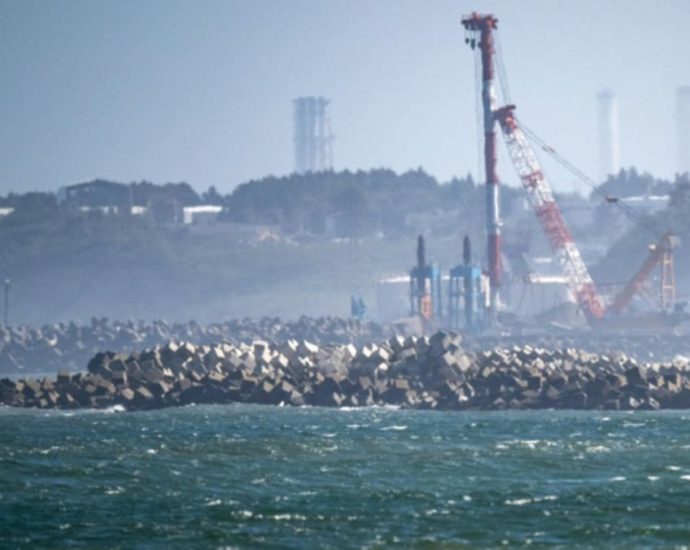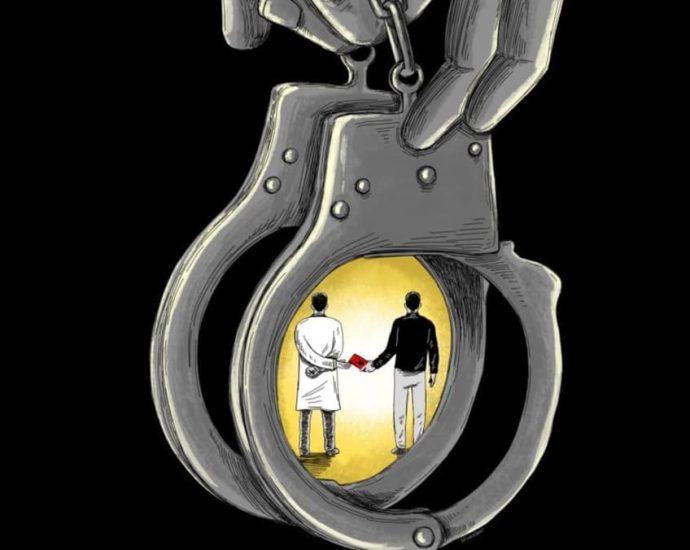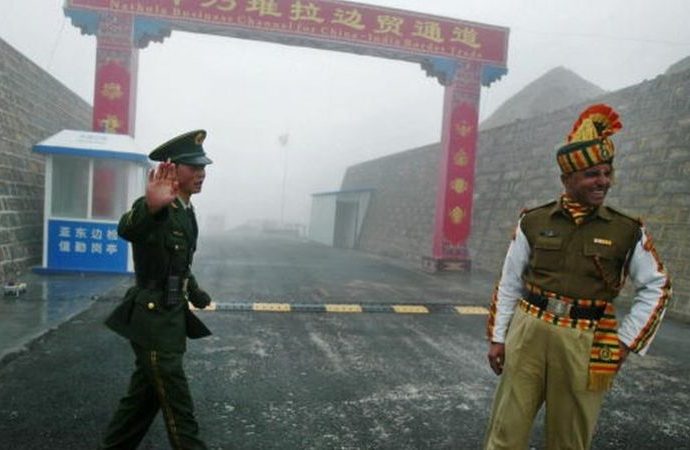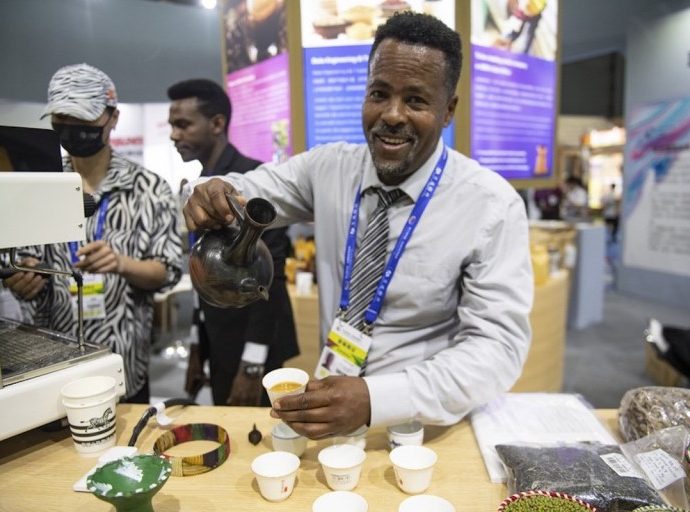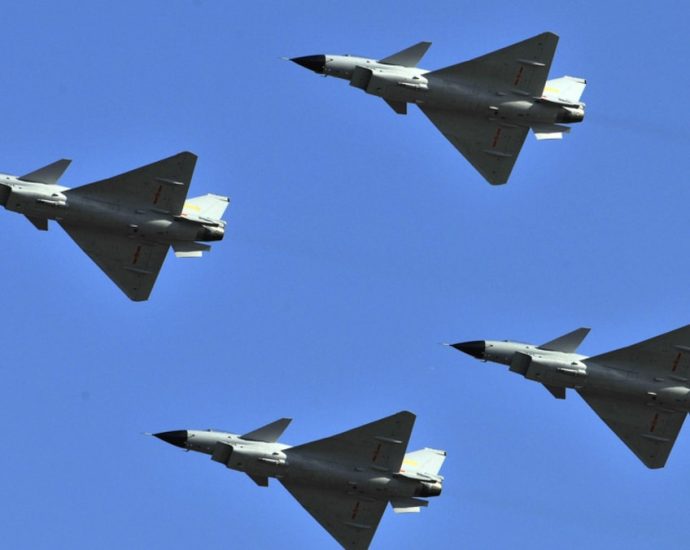Watch: India’s Chandrayaan-3 rover leaves its lander
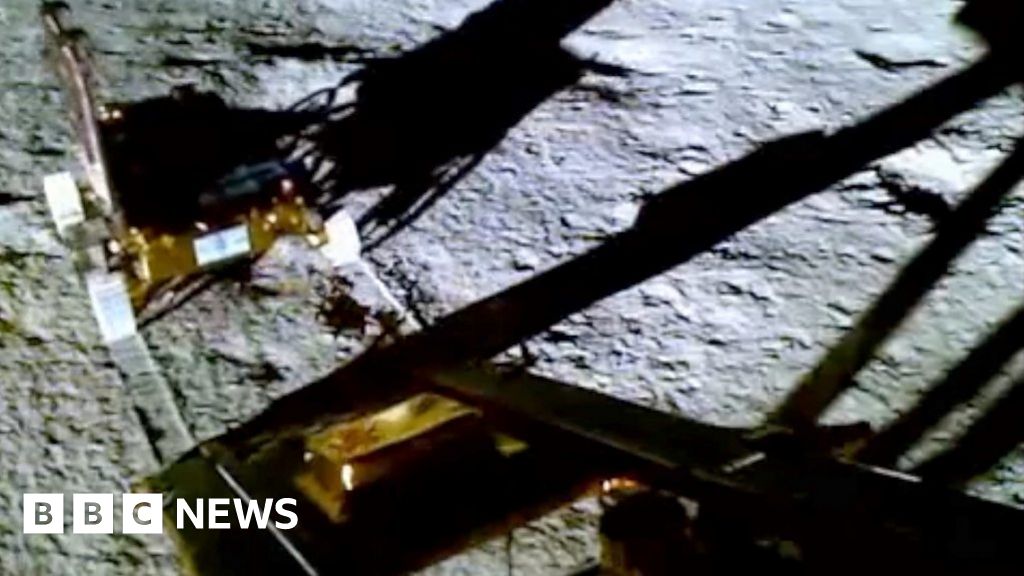
The Indian Space Research Organisation (Isro) has released the first-ever video of its rover for lunar mission Chandrayaan-3.
In the video, the rover is seen coming down the ramp of Chandrayaan-3’s lander, Vikram, onto the surface of the Moon.
India made history on 23 August when Vikram successfully touched down near the south pole of the Moon.
The 26kg rover called Pragyaan (the Sanskrit word for wisdom) was carried to the lunar surface in the lander’s belly.
It will now roam around the rocks and craters of the Moon, gathering crucial data and images to be sent back to Earth for analysis.
Philippine, Australian troops hold South China Sea drills
SAN ANTONIO: Australian and Filipino troops held exercises on Friday (Aug 25) near flashpoint South China Sea waters claimed by China, with Philippine President Ferdinand Marcos hailing them as an “extremely important” example of close cooperation. China deploys hundreds of coast guard, navy and other vessels to patrol and militariseContinue Reading
Parents settle with IMH, psychiatrist for S$330,000 over son’s suicide; ex-lawyers press for ‘unpaid’ fees
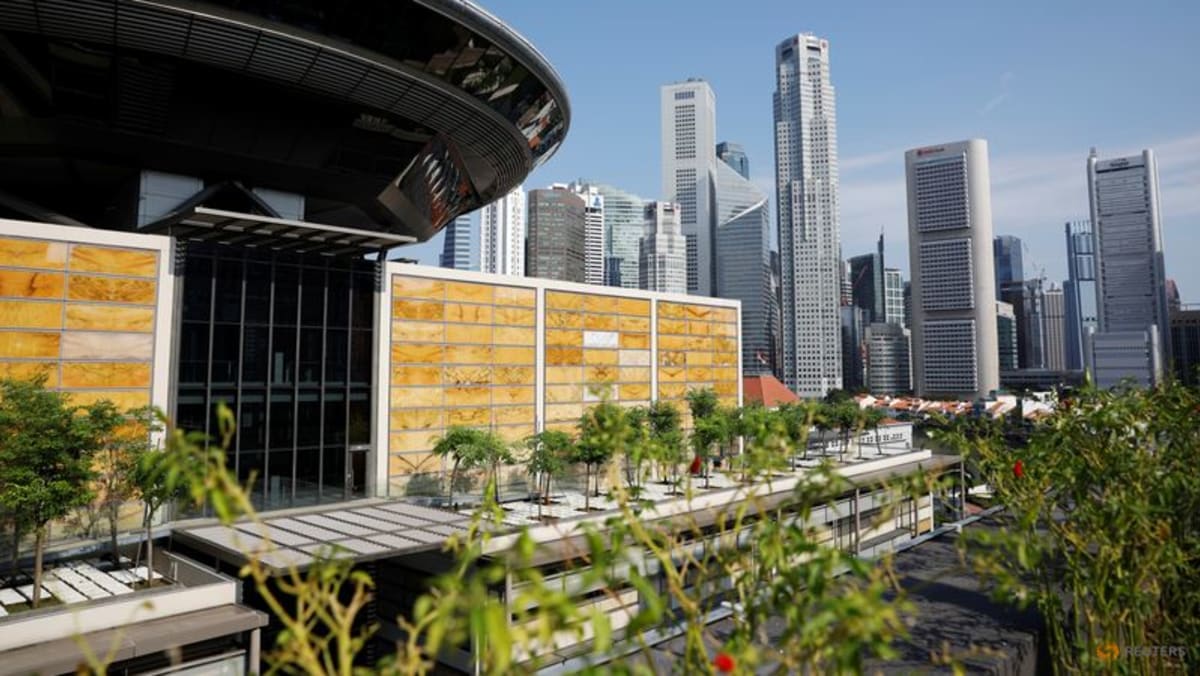
SINGAPORE: The parents who sued a private psychiatrist and the Institute of Mental Health for S$3.3 million (US$2.4 million) over alleged negligence linked to their son’s suicide have settled for a sum of S$330,000.
However, the father’s former lawyer filed court summonses asking for the money to be paid into court, as he felt the plaintiffs might “run off” with the settlement money while his fees of more than S$372,000 remain unpaid.
A second lawyer, who acted for the deceased man’s mother in the suit, is claiming fees of about S$141,000.
In a judgment released on Friday (Aug 25), Justice Choo Han Teck dismissed the summonses by the first lawyer. He said that all those involved may move on “sadder but wiser” if the lawyers can settle with their ex-clients on costs and “leave them with a sum sufficient as a balm for their grief”.
Mr Steven Joseph Arokiasamy, a 68-year-old retiree who previously worked with the Ministry of Defence, and Madam Tan Kin Tee, a 67-year-old part-time teacher, had sued Dr Nelson Lee Boon Chuan and IMH for S$3.3 million.
They blamed the defendants for the suicide of their son, Mr Salvin Foster Steven, who died aged 31 in 2017.
Mr Arokiasamy was initially represented by Mr Vijay Rai, while Mdm Tan was represented by Mr Anil Balchandani.
However, the pair terminated the services of both lawyers in July, before the trial was set to begin in September.
About a week after this, the parents settled with the defendants and agreed to discontinue the suit.
On his judgment, Justice Choo sai this would ordinarily mean “an uneventful end”, but Mr Rai filed a summons for his law firm to record the settlement, with the sum of S$330,000 to be paid into court.
Mr Rai later filed another summons for his law firm to be joined as a plaintiff or claimant.
He wanted to be made a plaintiff so that he can pursue his own demands over the settlement. He said that his fees rendered so far came to about S$372,000, with a separate sum of about S$13,000 in disbursements likely to be incurred.
These amounts do not include a sum of about S$56,000 already paid to him, nor another S$40,000 in costs to be paid to the defendants for a discontinued action against a second psychiatrist.
Mr Balchandani, the former lawyer of the deceased’s mother, said he would be seeking costs of about S$141,000. This does not include a sum of about S$10,600 that was already paid. Mr Balchandi expressed support for the two summonses brought by Mr Rai.
According to Justice Choo, Mr Rai filed the summonses because “he is anxious to have the S$330,000 paid into court because he thinks that the plaintiffs, especially the father, may ‘run off’ with the settlement money”.
Justice Choo dismissed the two summonses, with Mr Rai’s law firm to pay costs to the plaintiffs and defendants.
JUDGE EXPLAINS
In explaining his decision, Justice Choo said the pleadings did not indicate what cause of action the parents relied on.
He said it appeared that they claimed that their son was prescribed the wrong medication, was not properly attended to and was wrongly diagnosed as suffering from depression and not schizophrenia.
However, the judge said these claims should have been made on their son’s behalf, by the father suing as the administrator of his son’s estate.
“It does not explain why the father (personally) and the mother were suing as plaintiffs,” said Justice Choo. “In their respective affidavits, they claim that their son’s death drove them to depression and they could not therefore work.”
The parents said this led to them being dismissed from their jobs.
Justice Choo said that the parents’ case appeared to be “a difficult one”, with an early settlement sparing them much anger and grief, not just “on account of the loss of their son, but now fuelled and furthered by festering animosity with their own lawyers and a looming sense of dread over the fees”.
He said the settlement that was reached was “in itself right and fair”, but said he was not satisfied that the fees incurred are justifiable.
He cited a previous document from November 2020 that estimated the fee for Mr Rai’s law firm, inclusive of trial, to be about S$150,000.
This estimation was expected to be lower if the matter was settled before trial, which turned out to be the case.
“Despite having settled the suit before trial, Mr Rai is now claiming a sum of at least S$372,022.34, with an unknown amount yet to be claimed in further bills,” said Justice Choo.
He said Mr Balchandani’s fees of S$141,061.55, while a smaller sum, are “not insubstantial as well”.
“In this connection, Mr Balchandani’s support of both summonses is misplaced,” said Justice Choo. “The overall sum which the father and mother have already paid and the sums the lawyers are now claiming against them amount to around S$600,000, almost twice the settlement sum received by them before trial.”
He said the clients are entitled to have the lawyers’ fees taxed, to determine what the actual amount payable is.
“Until that is done, I need not comment further – save to say that it is for Mr Balchandani and Mr Rai to justify why the plaintiffs should incur the costs of hiring two sets of counsel to act for them in the matter of the death of their son,” said Justice Choo.
He said there were overlaps in the work done by both lawyers, which should be considered in rendering the final bill.
“It is not too late for parties to salvage something from this situation,” concluded Justice Choo.
“If Mr Balchandani and Mr Rai can come to a settlement on costs with their clients and leave them with a sum sufficient as a balm for their grief, then everyone concerned may move on, as they say, sadder but wiser.”
Changi Airport rolls out first fully automated passenger loading bridge
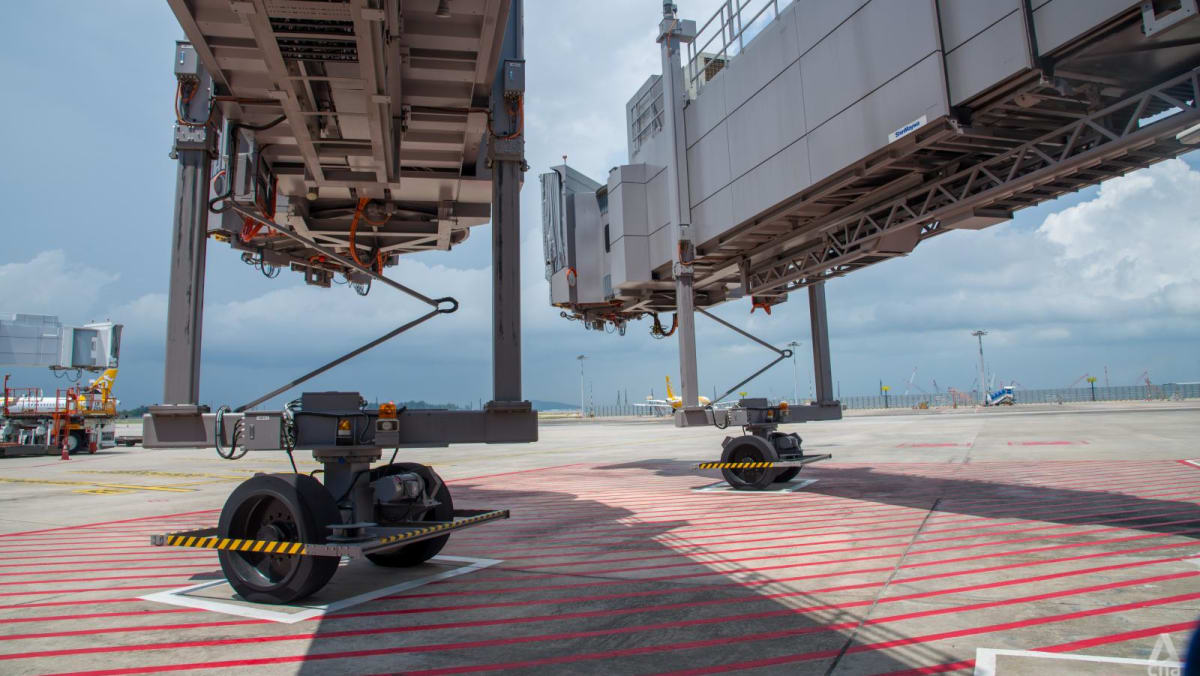
SINGAPORE: There are two minutes to spare once an aircraft landing at Changi Airport comes to a complete stop and chocks are put in place to prevent it from moving.
Within this window, operators of the passenger loading bridge must currently activate the bridge and manually manoeuvre it for the last 50cm to dock to the aircraft door accurately. Then they open the doors for passengers to disembark the plane and enter the terminal.
For wide-body planes, which have two aircraft doors, one operator is required for each arm of the bridge during the docking process.
While operators usually complete the process within two minutes, the speed depends on how proficient the operator is.
Japan’s ‘Moon Sniper’ mission looks to match Indian success
TOKYO: Hot on the heels of India’s historic lunar landing, Japan’s space programme is hoping to rebound from a string of setbacks next week with the launch of its own mission: “Moon Sniper”. The rocket will carry a lander expected to reach the Moon’s surface in four to six months asContinue Reading
Fukushima operator says released water samples within safe limits
Japan’s environment ministry said it had collected seawater samples from 11 different locations on Friday, results of which would be released on Sunday. The Fisheries Agency also pulled a flounder and a Gurnard fish early Friday from designated sampling spots near the pipe that released the Fukushima water. “By publishingContinue Reading
Why China is targeting the corruption tumour at the heart of its ailing health system
On average, healthcare accounted for 8.6 per cent of personal spending last year, up from 6.5 per cent in 2016, according to the National Bureau of Statistics. At the same time, the proportion of people aged 65 and over climbed from 10.8 per cent to 14.9 per cent. Scores ofContinue Reading
India and China agree to ‘de-escalate’ border tensions
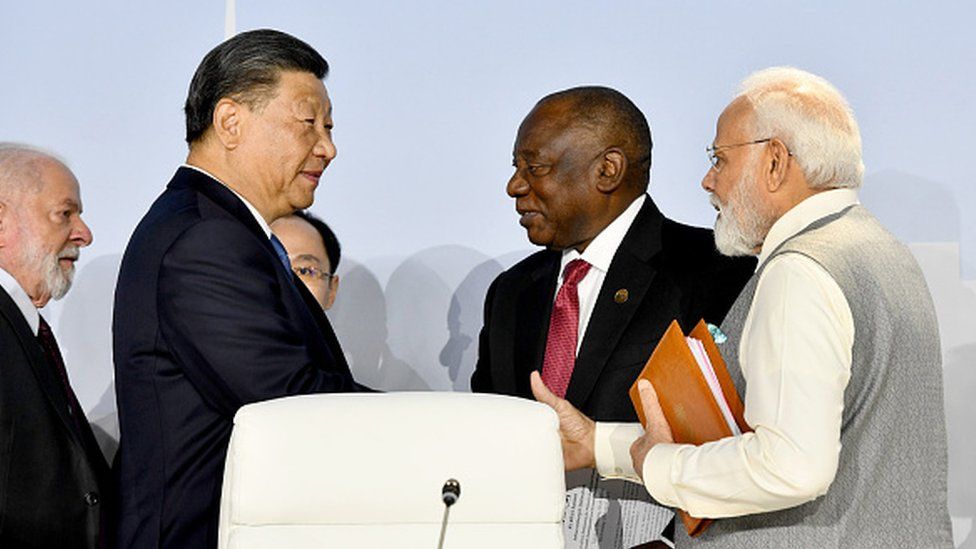 Getty Images
Getty ImagesIndia and China have agreed to de-escalate tensions along their disputed border after a conversation between its leaders, a senior Indian official said.
Prime Minister Narendra Modi and President Xi Jinping spoke on the sidelines of the Brics summit in South Africa on Wednesday.
Beijing said the meeting was held at Mr Modi’s request.
Relations between India and China have been worsening for more than three years.
The two world powers are facing off against each other along their ill-defined 3,440km (2,100-mile)-long border – known as the Line of Actual Control (LAC) – in the Himalayan region.
Mr Xi and Mr Modi met on the sidelines of the Brics summit in Johannesburg. The Brics countries – Brazil, Russia, India, China and South Africa – are often seen as a counterweight to the Western-led world.
On Thursday, Indian Foreign Secretary Vinay Kwatra said that both sides had agreed to step up efforts for the disengagement of troops along the LAC.
“The Prime Minister underlined that maintenance of peace and tranquility in the border areas and observing and respecting the LAC are essential for the normalisation of the India-China relationship,” Mr Kwatra said.
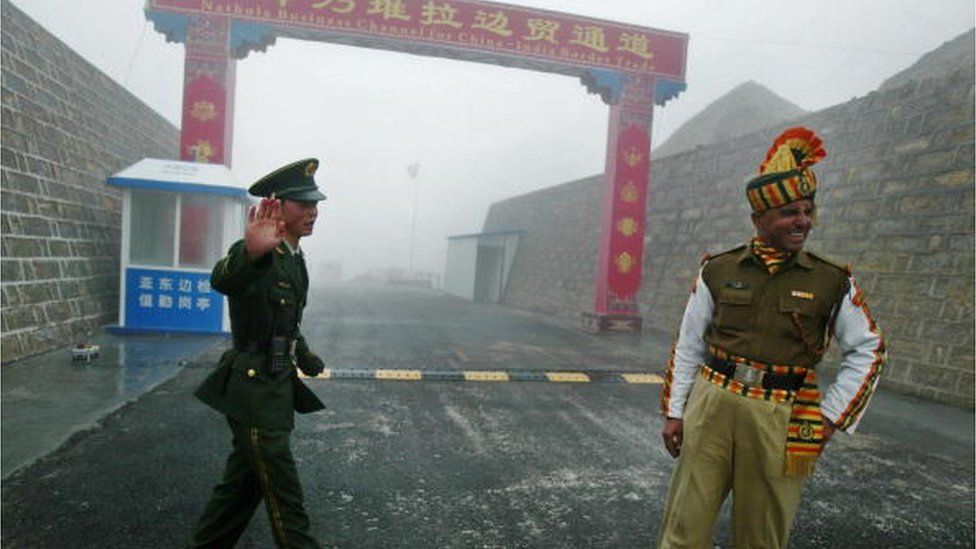
“In this regard, the two leaders agreed to direct their relevant officials to intensify efforts at expeditious disengagement and de-escalation,” he added.
China’s Foreign Ministry said in a statement that the two leaders had “a candid and in-depth exchange of views on current China-India relations and other questions of shared interest”.
“President Xi stressed that improving China-India relations serves the common interests of the two countries and peoples, and is also conducive to peace, stability and development of the world and the region,” the statement said.
It also added: “The two sides should bear in mind the overall interests of their bilateral relations and handle properly the border issue so as to jointly safeguard peace and tranquility in the border region.”
According to The Indian Express newspaper, no interpreters or note-takers were around when the two leaders spoke to each other.
Mr Xi and Mr Modi last spoke on the sidelines of the G20 summit in 2022.
Mr Xi is expected to arrive in India for the G20 summit hosted by Delhi on 9 and 10 September.
BBC News India is now on YouTube. Click here to subscribe and watch our documentaries, explainers and features.

Read more India stories from the BBC:
Related Topics
China shifting from extraction to investment in Africa
China experienced a massive economic boom in the 1990s and 2000s which increased its demand for resource imports, like oil, from Africa. That led to a model of development finance in which China funded infrastructure in African countries in return for access to resources.
This approach became known as the Angola model, because it all started with an infrastructure-for-petroleum partnership between China and Angola in 2004. Within a decade, however, a shift in China’s approach was needed, for a couple of reasons.
First, African countries are vulnerable to shocks and they struggle to keep up with mounting debt repayments. For instance, in Angola’s case, the price of oil fell from a high of US$115 to below $50 in mid-2014. More recently, the impacts of Covid’s economic shutdowns and supply shocks related to the war on Ukraine are taking a toll.
Second, China’s domestic needs are changing. In recent years, climate change and changing diets have put pressure on China’s domestic supply of food. This triggered interest in partnerships that could help.
China is also moving away from being an exporter of heavy-industry and energy-intensive manufactured goods. Its focus is more on growth areas, such as higher value-added agriculture and manufacturing. Geopolitically, it also wants to support African development and its own food security.
My study of these shifts reveals a changing relationship between China and Africa, moving beyond a focus on mainly oil and extractive commodities. The new focus is more on industrial production, job creation, investments that lead to African exports and productivity-enhancing agricultural and digital technology opportunities.
This model, called the “Hunan model”, is named after the province in southern China that is leading the push. African bureaucrats, researchers, trade associations and businesses should understand what’s happening in Hunan. It will help them to grasp new opportunities and ensure that African companies are competitively placed.
What is the ‘Hunan model’?
The Hunan model aims to support the 2035 Vision for China-Africa Cooperation by pushing for:
- medical cooperation,
- poverty reduction and agricultural development,
- trade,
- investment,
- digital innovation,
- green development,
- capacity building,
- cultural and people-to-people exchange,
- peace and security.
The delivery of those goals happens under the umbrella of the China-Africa Economic and Trade Expo and a pilot zone for in-depth China-Africa Economic and Trade Cooperation. Both are centred on Changsha, the capital of Hunan province.
Hunan province was chosen as the new frontier of China-Africa relations partly because many of China’s competitive industries are based there. They include major agri-tech companies, a leading Chinese electronic vehicle company (BYD Changsha), and manufacturing equipment and construction industry companies.
Many of these companies have a presence in, and long-run strategy for, African markets.
China-Africa Economic and Trade Expo
The China-Africa Economic and Trade Expo has many activities and events hosted in big exhibition centers. This allows new business partnerships to be forged with speed and logistical ease.
At a 2023 event with 10,000 Chinese and 1,700 foreign participants, it was reported that 120 projects, worth a total of $10.3 billion, were agreed upon. All 53 African countries with which China has diplomatic relations were present.

Pilot zone
The pilot zone for in-depth China-Africa Economic and Trade Cooperation is a huge area that’s been developed with the aim of expanding bilateral trade, dealing with bottlenecks in trade and cooperation and improving logistics between the two regions. Examples of typical bottlenecks include market access, finance, logistics, talent and services such as marketing and law.
Some of the initiatives that can be found in the pilot zone include vocational and education training and a digital services hub that supports Chinese companies in the efforts to economically engage Africa. The zone includes a permanent exhibition platform and a demonstration park.
Some implications of the shift
The Hunan model’s specific focus is on agriculture, heavy industry equipment and transport such as electric automobiles and trains. These are areas where Hunan is a leader within China. And they are growth industries in many countries in Africa.
For China it may lead to new sources of food security as well as new markets for technology products and opportunities to set technology standards. The approach thus places Africa in an important position for grasping new opportunities and shaping related areas of cooperation – at home, with China and globally.
The Hunan model also seeks to support more efficient trade. New trade passageways by rail, river, air and ocean are being forged to connect Hunan better with African countries, especially trade hubs. There are also efforts to tackle issues of access to foreign exchange and foster greater use of local currencies.
At the moment a lot of international trade is done in the US dollar, because it is widely accepted across all countries. But many developing countries struggle to accumulate dollars if they don’t have a commodity like oil or gas to export. Small and medium-sized (SME) traders struggle in particular, and are less able to bear any currency risks against the value of their own local currency.
The zone in Hunan includes a center that is testing trade payment systems based on other currencies. This could become a broader model for SME-based trade in local currencies.
Ultimately, China’s Hunan agenda will mean different things for different African countries and will evolve over time. It’s a recent shift, since 2018 especially. But, beyond its potential to elevate food security and production capacity in China and African countries, there will be other important implications.
It may facilitate digital and communications logistics for trade between China and Africa, as well as research on technology, industry and trade standards, and trade flows and trends.
Lauren Johnston is a senior researcher at the South African Institute of International Affairs and an associate professor at the China Studies Center, University of Sydney.
This article is republished from The Conversation under a Creative Commons license. Read the original article.
Taiwan reports renewed Chinese military activity, planes in ‘response’ zone
Taiwan does not publicise where its “response” zone is, but it keeps the closest watch on the Taiwan Strait, and the area to the island’s south and southwest where Chinese military activity often is concentrated. China has not announced further drills around Taiwan since Saturday, though it frequently mounts such missions without acknowledging them beforehand or afterwards. Taiwan’s defence ministry thisContinue Reading

